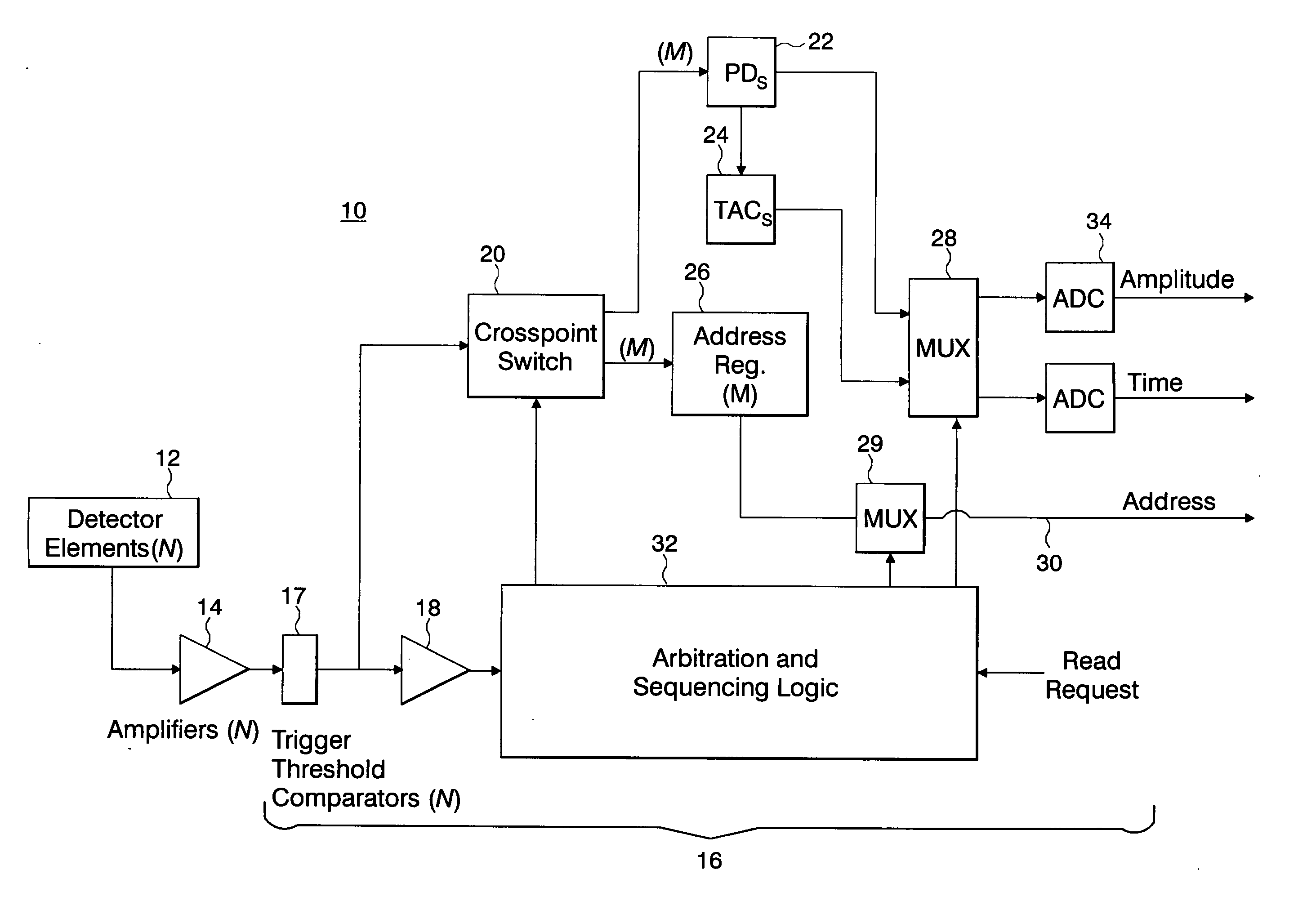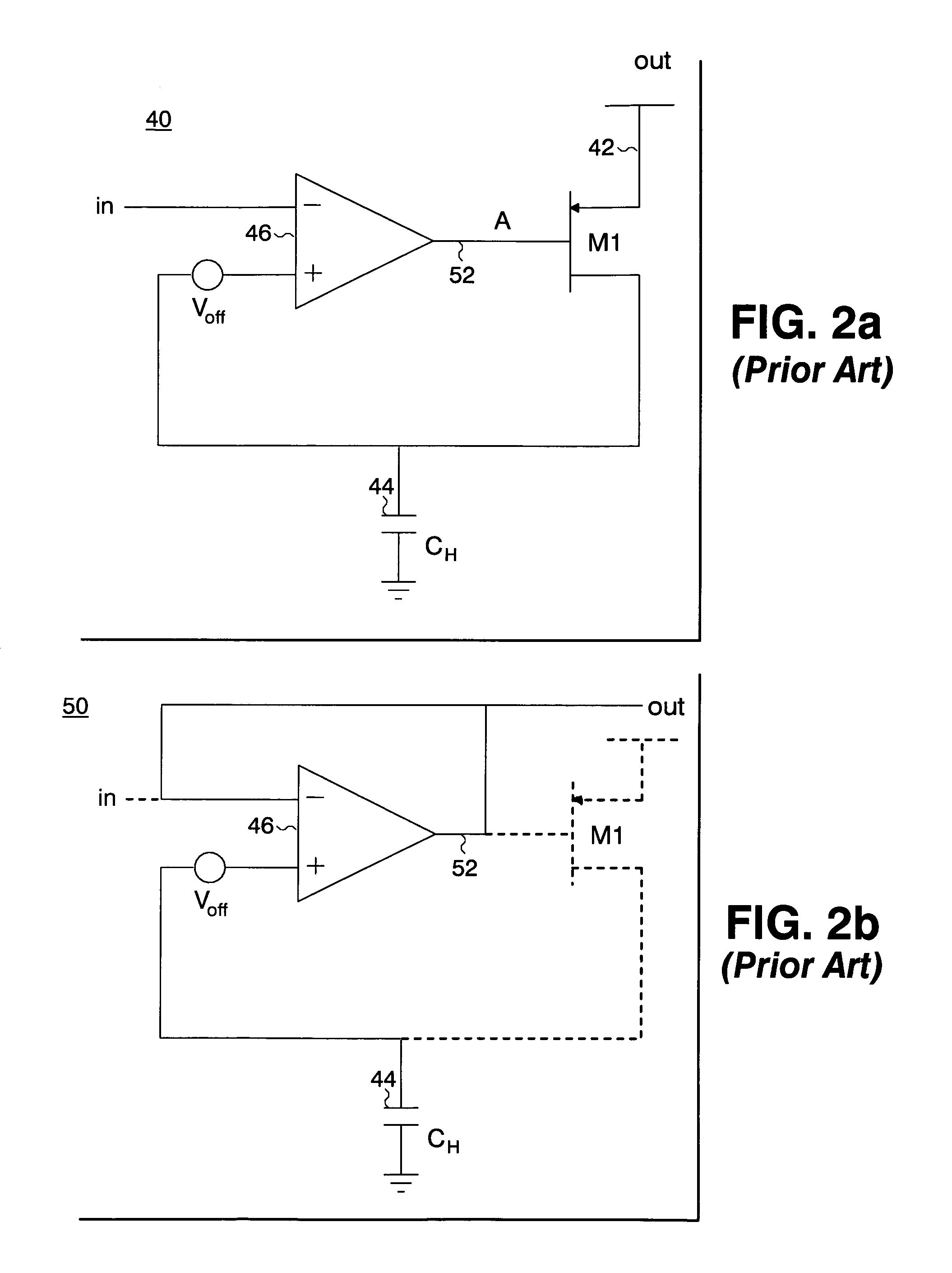Method and apparatus for signal processing in a sensor system for use in spectroscopy
- Summary
- Abstract
- Description
- Claims
- Application Information
AI Technical Summary
Benefits of technology
Problems solved by technology
Method used
Image
Examples
experiment 1
[0145] Monte Carlo simulations of the peak detector FIFO queue were performed for 500,000 events. In this simulation, the operation of the arbitration logic was not modeled. Randomly arriving pulses of 50 ns peaking time were input into an array of peak detectors which were assumed to complete processing after one peaking time. The inefficiency (fraction of events blocked) was recorded as a function of the ratio of the readout rate to the average input event rate. FIG. 10a shows the blocking probability for a 4-PD array 180 and an 8-PD array 182. The abscissa is the readout rate expressed in units of the average input rate. The simulation of FIG. 10a was performed with a fixed input rate of 640 Hz and a varying readout rate. A low value of input rate is appropriate for the case when the rate is much less than the inverse of the peaking time.
[0146] In FIG. 10b, the inefficiency is given for an 8-PD array as a function of input rate per channel, when the READ_REQUEST signal freque...
experiment 2
[0148] A chip was fabricated in a 0.35 DP-4M CMOS process. Die size is 3.2×3.2 mm and is pad-limited. Power consumption is less than 2 mW / channel.
[0149] Preliminary measurements on a first prototype ASIC were made. The results were arrived at using 8-bit sampling oscilloscopes and have not been corrected for other systematic inaccuracies. The chip contains thirty-two (32) channels, 32 comparators and eight (8) offset-free two-phase peak detectors with associated TACs. The crosspoint switch is a 32-to-8 crosspoint switch (addressable matrix of 256 CMOS switches) that can route any input channel to any PD / TAC.
[0150] The amplitude accuracy and uniformity of the eight peak detectors were measured with a burst of eight Gaussian-shaped pulses on the first input channel, followed by a burst of eight READ-REQUESTS. The root-mean-square (RMS) error in peak height was 0.27%, and the uniformity among the eight PDs was also within 0.3%.
[0151]FIG. 11a and FIG. 11b show the inputs and primary ...
PUM
 Login to View More
Login to View More Abstract
Description
Claims
Application Information
 Login to View More
Login to View More - Generate Ideas
- Intellectual Property
- Life Sciences
- Materials
- Tech Scout
- Unparalleled Data Quality
- Higher Quality Content
- 60% Fewer Hallucinations
Browse by: Latest US Patents, China's latest patents, Technical Efficacy Thesaurus, Application Domain, Technology Topic, Popular Technical Reports.
© 2025 PatSnap. All rights reserved.Legal|Privacy policy|Modern Slavery Act Transparency Statement|Sitemap|About US| Contact US: help@patsnap.com



